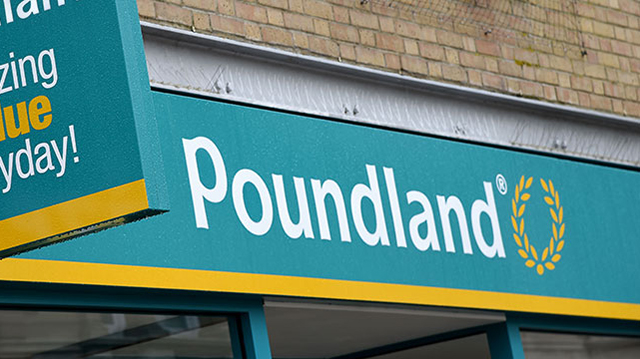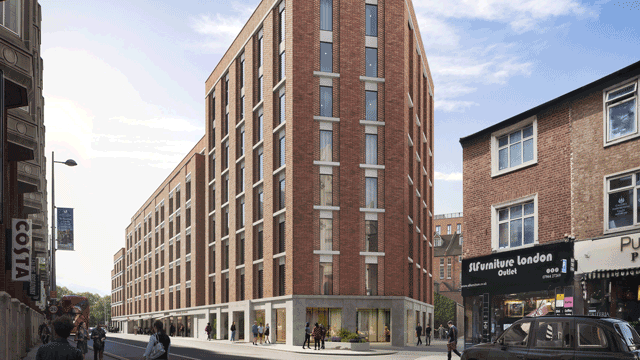The Belfast office market got off to a great start in 2004, and while the momentum may not be sustained at the same pace, it looks like being one of its better years. Over the past seven months, around 400,000 sq ft of office space has been let to both public and private sector tenants in Belfast — more than 300,000 sq ft of this since the beginning of the year.
Belfast’s largest single office letting in over a decade was secured by Northern Ireland developer Turkington for its James House project at the Gasworks in the Laganside area of the city. The 156,000 sq ft of space was let by Osborne King to the Northern Ireland Dept of Finance & Personnel at a rent of around £11.25 per sq ft.
This year’s second-biggest deal was Inislyn’s 60,000 sq ft Lighthouse, taken by the same department. Like most of the space taken this year, it was required to accommodate staff vacating public-sector offices in Victoria Square, now being redeveloped by Dutch developer AM as part of its major city-centre, mixed-use project.
Economic outlook
Given the flying start to the year, Jago Bret, director of offices at BTW Shiells, expects 2004 to be better than the past two years, which saw around 450,000 sq ft taken up. “Take-up for the first quarter of 2004 already stands at in excess of 250,0000 sq ft, and a number of other deals are in solicitors’ hands, which will increase take-up further during the second quarter,” he says.
It is too early to say if take-up will achieve the peak of 725,000 sq ft experienced in 2000. But the economic outlook and prospects for 2004 are brighter than the previous few years, and there is a real expectation that occupier demand from the private sector will improve during 2004 and beyond.
However, if the Northern Ireland civil service presses ahead with its outsourcing plans (see panel), the situation could change.
Another factor is the changing nature of the province’s economy. A report from HSBC Bank claims that a rebound in exports could propel Ulster’s economic growth up to nearly 3% this year compared with 2.6% in 2003. With traditional manufacturing continuing to decline, the economy is increasingly turning to international call centres and services to generate employment growth.
Prognosis supported
Dennis Turner, head of HSBC Bank’s business economics unit, says Northern Ireland would do better this year than the UK as a whole — a prognosis supported by the Dept of Enterprise Trade & Industry figures, which recently showed unemployment at 5.2% — lower than four other UK regions: London 6.8%; North East 5.8%; Scotland 5.6%; and West Midlands 5.4%.
As well as working to attract office demand, development agency Invest Northern Ireland played a key role in generating office activity for its own use. To make way for the Victoria Square development, it took 70,000 sq ft at Goodwood House to provide temporary accommodation for staff vacating its Chichester Street offices.
Even more important, it chose Dunloe Ewart and McAleer & Rushe as its private-sector development partners to provide a 100,000 sq ft HQ at Bedford Street in central Belfast. The project will kickstart the development of the site to provide a further 30,000 sq ft of offices as well as residential and leisure space.
However, unlike 2002, where the private sector dominated, the public sector has accounted for more than 60% of take-up for 2003 and an even greater share during the first quarter of 2004.
With the public sector driving a hard bargain, its take-up appears to have had little effect on rents. Most of the public sector take-up has been at levels of around £11 per sq ft, and some even less.
Consequently, rents are still languishing below Belfast’s record of £15.50 per sq ft, achieved at 9 Lanyon Place for the letting to Northbrook Technology three years ago.
A rent of £14 per sq ft was achieved at 1-3 Donegall Square South, where Bank of Ireland took 70,000 sq ft, but underpinning this rent was an agreement by the bank’s landlord to take over the accommodation being vacated.
“Elsewhere, rent of between £10.30-£12 per sq ft have been achieved for grade A accommodation in the city centre and periphery, including the Gasworks, for large-scale lettings of in excess of 15,000 sq ft and, in most cases, for in excess of 50,000 sq ft,” explains Bret.
“These lower-than-anticipated rents reflect the weak market conditions prevailing during early 2003, and the strong negotiating position held by the public sector during a year when private sector requirements for large space were few and far between. Rents of £13.50 per sq ft have been achieved at Imperial House, Donegall Square East, for suites of 2,500-5,500 sq ft.”
Nick Rose of Gerald Eve says that, following the recent take-up, there is very little quality space in the city, and there will be a need for more supply. Bret agrees, but says: “The dwindling supply and improving market conditions could lead to a hardening of rents this year, with lower levels of incentives being granted.”
Of particular concern is the reluctance of developers to undertake speculative development of high-specification offices, and they will need to see sustained stronger rents before starting such projects. They will also want to see a tenant in the 70,000 sq ft high spec Metro building in the city centre, where the quoting rent is believed to be £16 per sq ft.
Rose believes developers need to design flexible floorplates to accommodate demand from owner-occupiers seeking small units.
Another factor influencing developers is the vacant rates for commercial property which, until now, had not existed in the region. Both Bret and Rose agree that this will be a disincentive to development. Meanwhile, prime capital values for offices are expected to remain stable at £186 per sq ft during 2004.
|
|
|
The steps that Northern Ireland Civil Service is taking towards upgrading its 3m sq ft estate could have a major impact on the Belfast office development market. It has appointed a team, led by Deloitte and Chesterton, to finalise a strategy which would transform its entire £260m estate through public-private partnerships. |
|
The two consultants are also to look at the possibility of two office schemes of up to 150,000 sq ft each. These could be used to facilitate possible sale-and-leaseback deals with developers on properties owned by the estate. |
|
To satisfy the demand for the initial two projects, four possible development consortia are in a position to provide “quick hit” PPP requirements. These are the bidders that were shortlisted for Invest Northern Ireland’s 130,000 sq ft office project, which was awarded to the MRDE consortium. |
|
The others shortlisted were: Titanic Properties; the Lanyon Consortium led by William Ewart Properties, which has consent to develop 130,000 sq ft at 8 Lanyon Place, Belfast; and the Accommodation Services Partnerships consortium, which includes the German-owned Bilfinger & Berger. |










